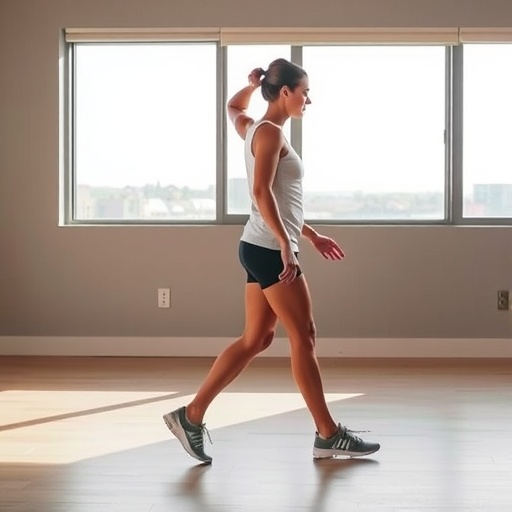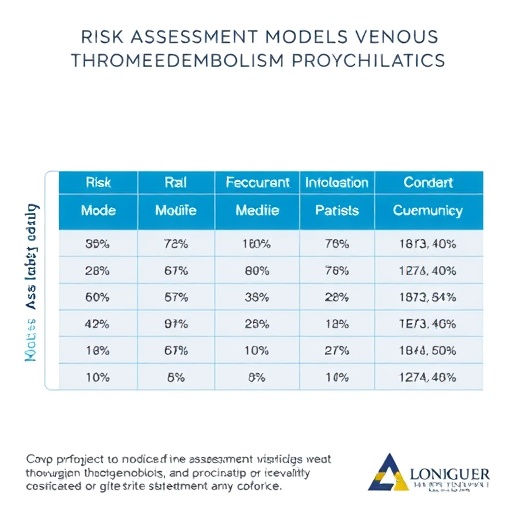In a groundbreaking study published in the esteemed journal Annals of Biomedical Engineering, researchers investigated the intricate dynamics of human gait, specifically focusing on the functional trade-offs of regulatory mechanisms involved in body energy management, frontal plane angular momentum, and the mediolateral margin of stability during hole negotiation walking. The implications of this research extend far beyond mere locomotion, potentially influencing our understanding of balance, stability, and energy expenditure in various settings.
Human gait is a complex process that relies on a delicate balance of biomechanical forces and regulatory mechanisms. When navigating uneven terrains or obstacles, such as holes in the ground, individuals engage in sophisticated strategies to maintain stability and control. This study delves into how our body optimizes energy use while negotiating such challenges, shedding light on both the internal and external factors that guide these adaptations.
The importance of energy management in human motion cannot be overstated. Efficient locomotion minimizes the energetic cost of walking, which is particularly crucial in humans, who have evolved to conserve energy during prolonged activity. The study posits that individuals constantly optimize their gait strategies by adjusting energy expenditure based on the immediate environmental demands. The researchers aimed to elucidate the specific ways in which body energy, angular momentum, and stability are interrelated, particularly during hole negotiation tasks.
Frontal plane angular momentum refers to the rotational motion of the body around a vertical axis while executing a gait cycle. This movement is critical when transitioning through gaps or negotiating uneven surfaces, where the risk of falling increases. The research highlights that the body’s ability to manage this angular momentum through targeted muscle activation and postural adjustments is paramount to ensuring stability as one navigates potentially hazardous scenarios.
Mediolateral stability plays a crucial role when traversing obstacles. Individuals must not only maintain forward movement but also side-to-side balance, which can be particularly challenging when encountering holes or dips. The study elaborates on how human beings use intricate adjustments in their limb movements and body posture to enhance their mediolateral stability. Recklessly stepping over a gap can lead to catastrophic falls, and understanding the biomechanical strategies involved may assist in designing better rehabilitation programs for those with mobility impairments.
To investigate these mechanisms, Arampatzis and colleagues employed advanced motion capture technology and biomechanical modeling to analyze the gait patterns of healthy participants engaging in hole negotiation tasks. Their approach allowed for the detailed measurement of joint angles, limb movements, and ground reaction forces. The data collected provided invaluable insights into how individuals modulate their gait in response to varying hole dimensions and environmental contexts.
Throughout the experimentation process, one notable observation was that the participants exhibited varying gait strategies based on the size and width of the hole. The research found that individuals instinctively adopted broader stances or adjusted their stride lengths to maximize stability when confronted with larger gaps. This adaptability underscores the body’s inherent ability to modify movement patterns in real-time, reflecting a sophisticated interplay of sensorimotor feedback and cognitive processing.
The findings have far-reaching implications for fields such as rehabilitation and prosthetics. By understanding the biomechanical principles underlying effective obstacle negotiation, healthcare providers can develop more targeted interventions for individuals recovering from injuries or surgeries that affect gait. Additionally, advancing prosthetic technology to mimic these natural strategies could significantly enhance the mobility and safety of users, allowing them to navigate their environments with greater confidence.
Furthermore, this research may inform the design of public spaces and urban environments. By incorporating knowledge about human balance and stability into architectural planning, urban developers can create safer pathways and smoother transitions for pedestrians. This is especially relevant for elderly populations or individuals with mobility challenges who may be disproportionately affected by uneven surfaces.
The exploration of the body’s dynamic adaptations during locomotion also invites further inquiry into the neurological underpinnings of these processes. Future research could investigate the cerebral mechanisms that facilitate the real-time decision-making required for efficient and safe gait patterns. Understanding how the nervous system processes sensory information and translates it into motor commands is crucial for advancing both basic science and applied clinical practices.
As we continue to unravel the complexities of human movement, studies like this provide critical insights into the fundamental aspects of biomechanics and stability. By bridging the gap between physical science and practical applications, this research holds promise for enhancing not only athletic performance but also daily functional mobility and quality of life.
In conclusion, the study by Arampatzis and colleagues presents a compelling look into the regulatory mechanisms that guide human gait, particularly in challenging scenarios such as hole negotiation. Their findings underscore the elegance and adaptability of our biomechanical systems, revealing how we instinctively manage energy, momentum, and stability in our quest to navigate an ever-changing world. This research sets the stage for future investigations that could further deepen our understanding of movement and its implications for health, wellness, and the human experience.
Subject of Research: Human gait dynamics during hole negotiation
Article Title: Functional Trade-Offs of Regulatory Mechanisms in the Management of Body Energy, Frontal Plane Angular Momentum and Mediolateral Margin of Stability During Hole Negotiation Gait
Article References:
Arampatzis, A., Nikolaidou, ME., Theodorakis, C. et al. Functional Trade-Offs of Regulatory Mechanisms in the Management of Body Energy, Frontal Plane Angular Momentum and Mediolateral Margin of Stability During Hole Negotiation Gait.
Ann Biomed Eng (2025). https://doi.org/10.1007/s10439-025-03835-7
Image Credits: AI Generated
DOI: 10.1007/s10439-025-03835-7
Keywords: Human gait, biomechanics, energy management, stability, obstacle negotiation, frontal plane angular momentum, mediolateral balance, rehabilitation, prosthetics.
Tags: adaptive gait patterns in varying environmentsbalance during obstacle negotiationbiomechanics of walkingenergy expenditure optimizationenergy management in human gaitfrontal plane angular momentumgait navigation strategieshuman locomotion efficiencyimplications for rehabilitation and mobilitymediolateral margin of stabilityregulatory mechanisms in locomotionstability in uneven terrain





